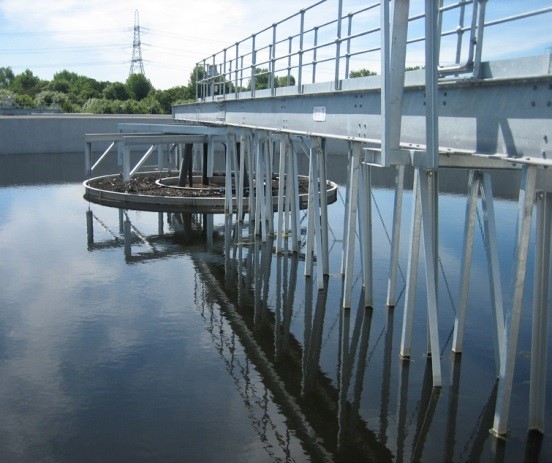Phosphorous Removal
Since the Urban Wastewater Treatment Directive in 1991, UK water companies have had to manage phosphorus discharges. The challenges surrounding phosphorus discharges have grown within the Water Framework Directive. It is an aim of the Environment Agency to reduce the number of rivers with high concentrations of nutrients. With respect to phosphate, a target is that levels are reduced below 0.1mg/L. This may require effluent phosphorous concentrations at Sewage Treatment Works (STW’s) to be reduced by one order of magnitude. The tightening phosphorus limits are also made more difficult to meet in light of the tightening iron limits.
MMI has worked with a number of clients to identify optimal removal strategies for their particular facilities. This optimal approach can range from simple metal salt addition systems, to full-scale biological phosphorous removal processes and tertiary treatment. The growing interest in renewable sources of phosphorous has increased the range of removal options available, thereby increaseing the complexity of the options evaluation process.
Beneficial capture of phosphorous is generally achieved through the process of forming a precipitate of magnesium, ammonium and phosphorous known as struvite (magnesium ammonium phosphate). Since struvite is a bio-available form of phosphorous, the controlled formation and capture of this precipitate provides an opportun[fusion_builder_container hundred_percent=”yes” overflow=”visible”][fusion_builder_row][fusion_builder_column type=”1_1″ background_position=”left top” background_color=”” border_size=”” border_color=”” border_style=”solid” spacing=”yes” background_image=”” background_repeat=”no-repeat” padding=”” margin_top=”0px” margin_bottom=”0px” class=”” id=”” animation_type=”” animation_speed=”0.3″ animation_direction=”left” hide_on_mobile=”no” center_content=”no” min_height=”none”][ity to beneficially reuse the phosphorous in agricultural applications as a slow-release fertilizer.
Our initial approach to a phosphorous reduction project often includes the following steps:
- Evaluate treatment process to understand existing infrastructure
- Prepare a list of plant-specific phosphorous removal options, accounting for current system configuration, available treatment capacity, and available footprint
- Evaluate sludge handling and disposal practices and other critical operational factors
- Evaluate removal options using biological simulation software such as GPS-X / Biowin
- Prepare conceptual level cost estimates for the feasible options
Options for phosphorous removal generally include:
- Biological phosphorous removal, various configurations
- Controlled struvite formation and capture
- Chemical phosphorous removal, with or without tertiary filtration
- Combination of the above
Solids separation can have a significant impact on the success of phosphorous removal technologies, since effluent limits are generally on a Total Phosphorous (TP) basis, rather than a soluble basis. Very low soluble phosphorous concentrations can be achieved through a combination of technologies, but the phosphorous associated with the solids means that the solids must be separated and captured. MMI’s expertise with improving solid-liquid separation using proprietary modelling and Computational Fluid Dynamics (CFD) can be applied to optimise existing settlers and minimise capital investment.
For more information surrounding phosphorous removal, or to discuss your project requirements, please contact us on 0117 960 2212 (Bristol) or email us.[/fusion_builder_column][/fusion_builder_row][/fusion_builder_container]